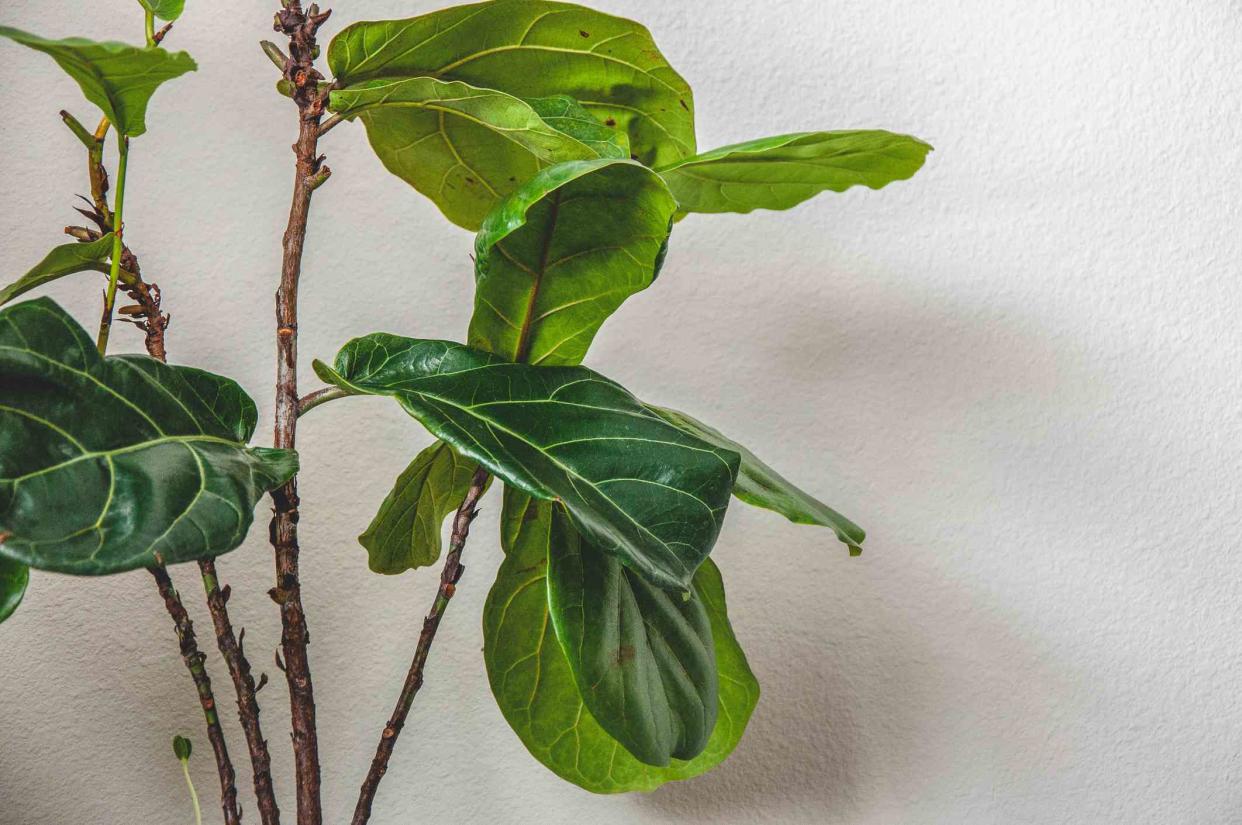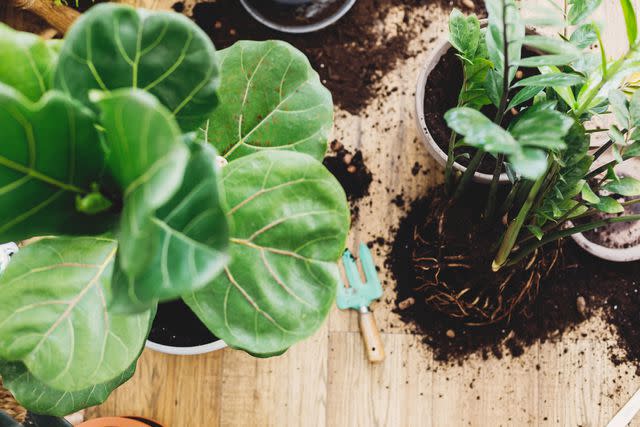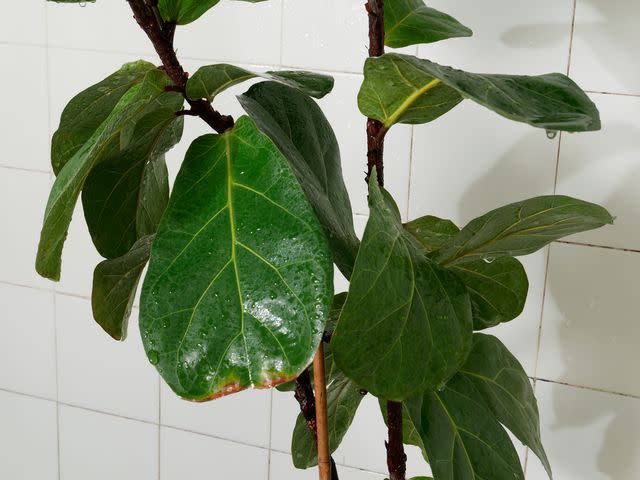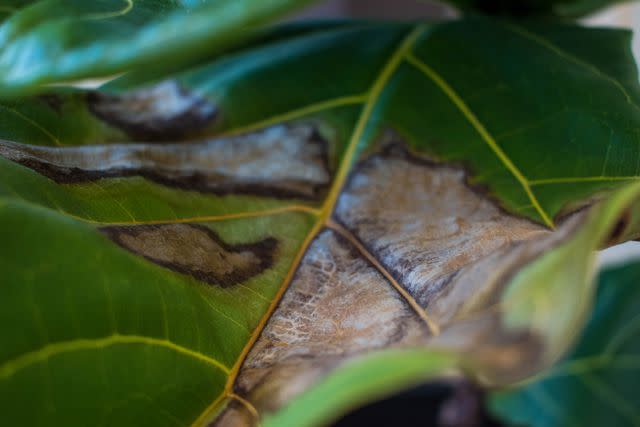4 Reasons Why Your Fiddle Leaf Fig Has Brown Spots and How to Fix It

K. E. Brown / Getty Images
Though the fiddle leaf fig is relatively easy to care for, it’s likely that everybody who has one will at some point discover brown spots on its leaves.
Brown spots on fiddle leaf fig leaves can be cause dry various things, with the most common reason being inconsistent watering.
But before you start watering more frequently, consider all the possibilities for what could be causing your fiddle leaf fig’s leaves to get brown spots. Whether they’re big brown splotches or little green speckles, we’ve got a fix.
Tiny Brown Speckles

Bogdan Kurylo / Getty Images
Tiny brown speckles or dark red spots on a fiddle leaf fig are usually caused by inconsistent watering or overwatering.
When there’s too much moisture, the root system cannot absorb it. The brown discoloration on the leaves is caused by leaf cells bursting in a relatively common condition called edema (also spelled oedema).
The dark brown spots (and condition causing them) can be treated by following a careful watering regimen, and eventually the spotted leaves will be replaced by healthy green color.
Tip
If you see tiny reddish brown spots on your fiddle leaf fig's younger leaves, take a close look to see if the spots might be moving because the spots could actually be spider mites. (Spider mites don't usually go for more mature leaves.) These tiny pests can be easily removed with a spray of water on the undersides of the leaves.
Brown Leaf Edges

Elimage / Getty Images
A few different things can cause brown leaf edges on a fiddle leaf fig, including underwatering and root rot.
If you're watering just once per week, check to see if the soil feels dry to the touch more than an inch below the soil surface. If it is, check the soil surface more often and see if it is drying out quicker than you thought. If so, you may need to water a bit more often.
But brown leaf edges on your fiddle leaf fig can also indicate root rot, which can occur with overwatering and/or poor drainage conditions. (That said, it is more likely the brown spots appear at the center of the leaf with overwatering.) You can look for other signs of root rot to be sure, such as the lowermost leaves turning yellow and falling off.
Check the drainage hole of your container for a blockage. Repot the plant in a container with good drainage (drainage holes are ideal, and terracotta pots are good for regulating moisture) and replace the wet soil with fresh, dry potting soil.
If you want to repot it in the same pot, be sure to sanitize the pot and cut off any affected roots before repotting in clean soil.
Brown Spots in the Middle

Kara Knight / Getty Images
Dark brown spots or patches that form around the middle of the leaf surfaces of your fiddle leaf fig may mean root rot, possibly caused by overwatering or poor drainage.
If a large area of the leaf is damaged, remove it from the plant.
Dark brown spots such as these may also be an indication of the plant being exposed to temperature extremes, which stresses the leaves. To prevent this, be sure the plant is not placed near a drafty window, air conditioner, heat vent, or space heater, and be sure it stays consistently warm in the winter months.
Crispy Brown Spots
If your fiddle leaf fig's leaves have spots or patches that are brown or tan as well as dry and crispy, this is usually a sign that the plant is dried out and needs to be watered more regularly.
Check the soil surface frequently and if the soil is dry further down than an inch, water slightly more often.
This condition can also indicate that the plant is root- or pot-bound, and the soil has compacted to the point where it doesn’t absorb water properly. To fix this problem, repot the plant in a larger, well-draining container with fresh potting soil.
Tips for Watering a Fiddle Leaf Fig
Consistent watering is key to keeping your fiddle leaf fig healthy and free of brown spots and discoloration.
Keep the soil consistently moist. In properly light conditions, this will require watering about once per week, but check the soil for dryness to be sure.
Water only when the top inch of soil is dry to the touch.
Be watchful for signs of overwatering, such as brown or yellow leaves or spots.
Make sure the container has proper drainage.
Read the original article on The Spruce.

